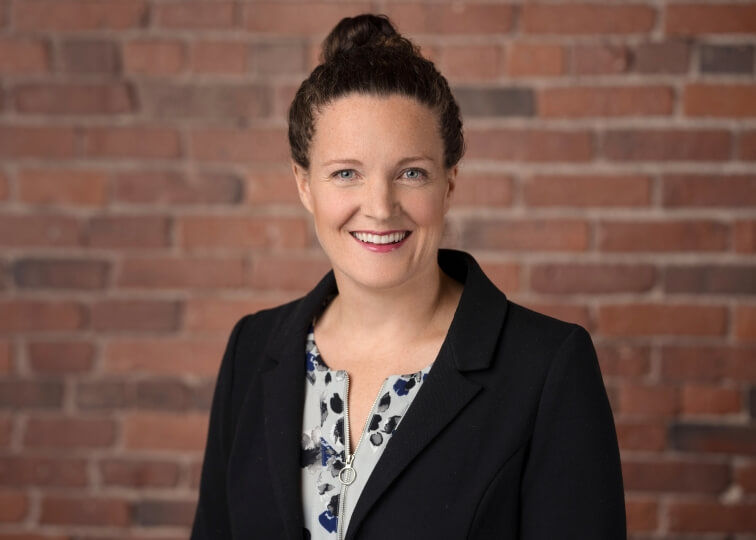News
Emily Parfit, A.B. '08
A gap year in South Africa after high school ignited Emily Parfit’s passion for education. She so loved teaching, she considered remaining in South Africa and foregoing a college education.
“My father gave me a speech about how I could have an impact on the hundred kids that came through my classroom every year if I stayed, or I could come back, get a college education and have a much broader, systemic impact,” said Parfit, A.B. '08.
That conversation convinced Parfit to return. First recruited to Harvard as part of the women’s rowing team, Parfit concentrated in mechanical engineering at the Harvard John A. Paulson School of Engineering and Applied Sciences (SEAS).
“I loved the math classes I was taking, I loved the computer science classes I was taking, and I loved the physics classes I was taking,” Parfit said. “Engineering was a degree that enabled me to take a breadth of courses and subjects when specializing in just one didn’t feel right to me. What all of those subjects had in common was problem solving, and that’s been the theme that’s persisted throughout my career. I love taking thorny problems, breaking them down into their component pieces, and tackling them one at a time.”
Parfit combined that love of problem solving and teaching to build a career solving some of the most pressing challenges in education. She’s a partner at Education Resources Strategies (ERS), a Massachusetts-based nonprofit that helps U.S. school districts promote educational equity and improved outcomes for all of their students – especially those with the greatest learning needs and those furthest from opportunity.
“I built this toolkit of problem-solving approaches, which has served me so well,” she said. “If I’d gone to another engineering school, maybe I’d be building bridges, but I’m so glad I can apply the skills I built in undergrad in the field of education.”
Parfit began teaching at Noble and Greenough School in Massachusetts not long after she graduated from Harvard, but was looking for a change after four years. She was still looking to make an impact beyond any one classroom. That desire for new challenges – and the skills to solve them – led to Parfit getting her MBA from Boston University in 2014, even writing her application essay about the distribution of funding in U.S. education. While at a networking event there, Parfit met a representative from ERS.
“As he described the work, I felt it was my dream job,” she said. “It has been ever since.”
Parfit joined ERS as an associate 10 years ago, and was named a partner in January 2023. She’s undertaken projects with a number school districts, including helping the Dallas Independent School District to build out its racial equity strategy, and securing additional funding for Baltimore City Public Schools in which a high percentage of the students are in extreme poverty.
“In education you need great teachers, rigorous coursework, great leaders and administrators, and community resources,” she said. “Time and time again, when you look at the distribution of those resources, Black students are often less likely than their peers to have access to high-quality learning experiences. When you realize those are the experiences we’re creating, then of course these are the outcomes we get as a country. The question becomes what you do about it.”
Understanding the specific challenges and needs of each school district is critical to Parfit’s work with ERS, and that’s where SEAS continues to benefit her. She remembers plenty of assignments at Harvard in which she’d “solve a bunch of equations and then not know what you’ve found at the end.” That taught her to first determine the specific question that needed to be answered, then develop a strategy. When she starts working with a new school district, she takes the same approach.
You have to understand the resources you can draw on that are applicable, then break the problem down into bite-sized chunks and not get overwhelmed or distracted by how complicated the big picture is.
Parfit especially enjoys working with schools that take innovative, integrated approaches to educational equity – not unlike her integrated, multidisciplinary engineering experience at Harvard. Like many districts, Dallas has a racial equity office, but its goal is to promote equity in all areas of education.
“Every single department has to do what they’re doing differently,” she said. “Academic departments need to think about how they’re designing curricula differently through a racial equity lens. The human capital team needs to think about how they’re structuring jobs differently. You can’t silo racial equity into a single department or team.”
Parfit is excited to keep working with teams that are taking that integrated approach to the next level. By partnering with local businesses to offer internships for high school students, and engaging community partners who can offer enrichment activities, she hopes to help broaden the set of resources available to create student learning experiences that unlock every child’s potential.
“For so long, school was one teacher in front of a fixed number of kids,” Parfit said. “Schools and systems were set up as if all students needed the same things. We’re trying to collaborate with communities to ensure race and poverty no longer predict a student’s life trajectory.”
Topics: Alumni, K-12, Materials Science & Mechanical Engineering
Cutting-edge science delivered direct to your inbox.
Join the Harvard SEAS mailing list.
Press Contact
Matt Goisman | mgoisman@g.harvard.edu



